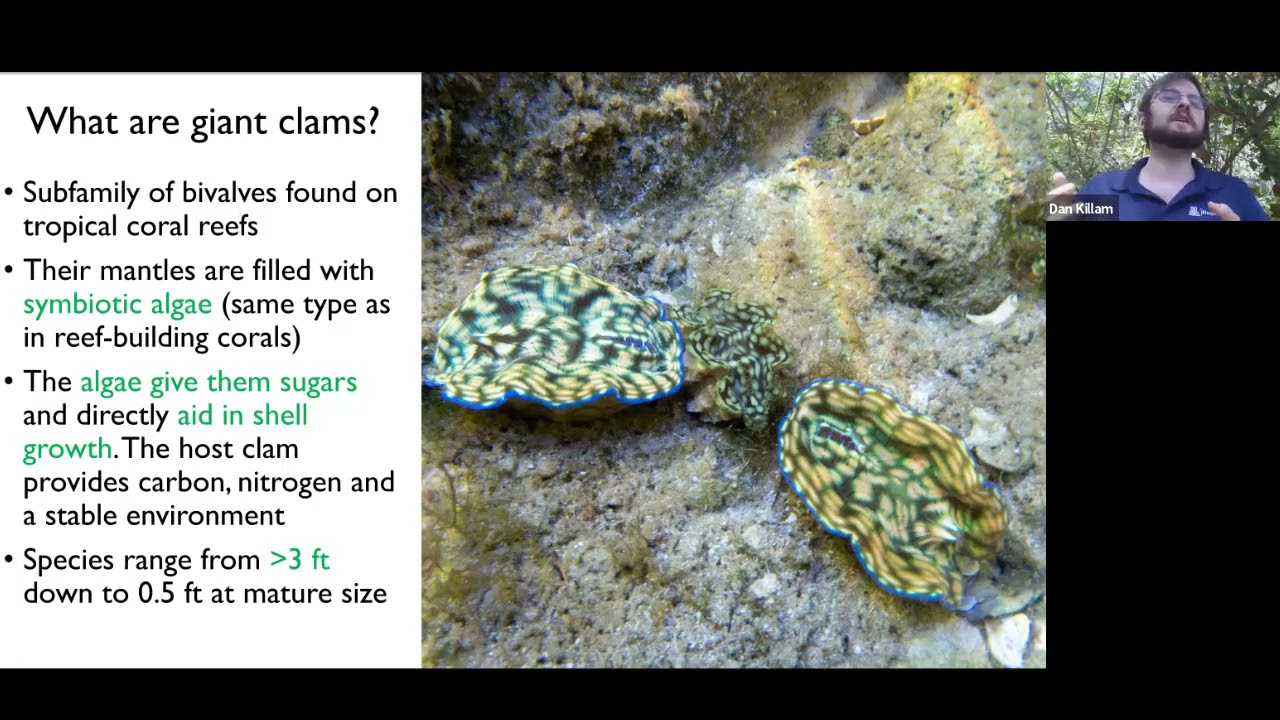Summary:
– Giant clams utilize symbiotic algae to accelerate their growth, similar to corals, but their adaptation to climate change and ocean acidification is poorly understood.
– Dan Killam, a researcher at Biosphere 2, is cultivating smooth giant clams in a massive coral reef tank to study their shell growth in controlled conditions.
– The Biosphere 2 ocean reef tank offers an ideal environment to explore the effects of changing oceans on mollusks, and Dan’s research provides valuable insights into their future.
Why Am I Growing Giant Clams in the Middle of the Arizona Desert?
Did you know that giant clams possess a remarkable ability to grow their shells quickly? These bivalve mollusks, much like corals, harbor symbiotic algae within their bodies that expedite their growth. However, the impact of climate change and ocean acidification on these fascinating creatures remains largely unknown. This is where Dan Killam, a dedicated researcher at Biosphere 2 in Arizona, comes into the picture.
Imagine a 700,000-gallon coral reef tank, shimmering with life and situated incongruously amidst the Arizona desert. This is Biosphere 2, an iconic research facility investigating Earth systems and life sciences. Dan Killam is embarking on a groundbreaking endeavor to understand how giant clams cope with ever-changing ocean conditions within this artificial ocean.
The controlled environment of the Biosphere 2 ocean reef tank provides the ideal setting for Dan’s investigation. Like corals, giant clams rely on a delicate partnership with internal algae known as zooxanthellae. Together, they thrive within a specific range of temperatures and pH levels. It is this symbiotic relationship that drives the clams’ astounding growth. Yet, as the oceans grow warmer and more acidic due to climate change, this delicate harmony is jeopardized, potentially hindering their growth.
By cultivating smooth giant clams within Biosphere 2, Dan can meticulously monitor and study their shell growth under controlled conditions. In just one year, he has witnessed these juvenile clams more than double in size, and they are on track to reaching a prodigious two feet in length. This unprecedented experiment provides valuable insights into how these magnificent mollusks will respond to the challenges posed by a changing world.
Think about it – the desert of Arizona may seem like an unlikely place to study giant clams. Still, Biosphere 2 offers an opportunity to delve into the future of our oceans. Through his research, Dan Killam unravels the mysteries of climate change and ocean acidification, providing hope for the conservation of these extraordinary creatures.
Understanding the impact on marine ecosystems becomes increasingly crucial as we navigate the uncharted waters of climate change. With their intricate symbiosis and rapid shell growth, giant clams are a key indicator species in this endeavor. By studying their adaptive mechanisms, we can gain valuable knowledge about the clams themselves and the overall health of our oceans.
From dazzling images to captivating videos, Dan Killam’s research at the Biosphere 2 is a testament to our unyielding quest for knowledge. As you immerse yourself in the wonders of the oceanic realm, the notion of growing giant clams in the middle of a desert becomes thrillingly extraordinary. This innovative approach reminds us of the boundless human ingenuity and our relentless drive to protect and understand the natural world.
So, why are these giant clams being cultivated in the heart of Arizona? The answer lies in the potential they offer to unlock the secrets of our oceans. We can forge a path toward a sustainable future by studying their adaptation to changing conditions. Dan Killam’s research at the Biosphere 2 exemplifies the power of human determination and reminds us of the interconnectedness of all living beings on our beautiful planet.
As you ponder the marvels of Biosphere 2 and the growing giant clams within its walls, let their story serve as a reminder of our shared responsibility to safeguard the wonders of our natural world. Together, we can push the boundaries of knowledge and secure a flourishing future for generations to come.
*****
Source Description
By Dan Killam, Ph.D., Biosphere 2, University of Arizona
“Why Am I Growing Giant Clams in the Middle of the Arizona Desert?”: Giant clams are special among bivalve mollusks in using symbiotic algae within their bodies to speed up their growth, like corals do, yet little is understood of how they will fare in the face of climate change and ocean acidification. To look into the future and explore these questions further, researcher Dan Killam is growing smooth giant clams in a 700,000-gallon coral reef tank of the Biosphere 2 in Arizona to understand how they manage to grow their shells so quickly. In the Biosphere 2 “ocean,” juvenile giant clams have doubled in size in just one year and will eventually reach two feet long.
The controlled conditions of the Biosphere 2 ocean reef tank provide a perfect setting to explore and experiment. As with corals, the partnership between giant clams and their internal algae only works within a narrow range of temperatures and pH levels. As the oceans grow warmer and more acidic, this relationship will be stressed, reducing their growth. In this talk, Dan will share insights from his groundbreaking research on the impacts of changing oceans on mollusks, featuring images and video of the singular Biosphere 2 facility.

